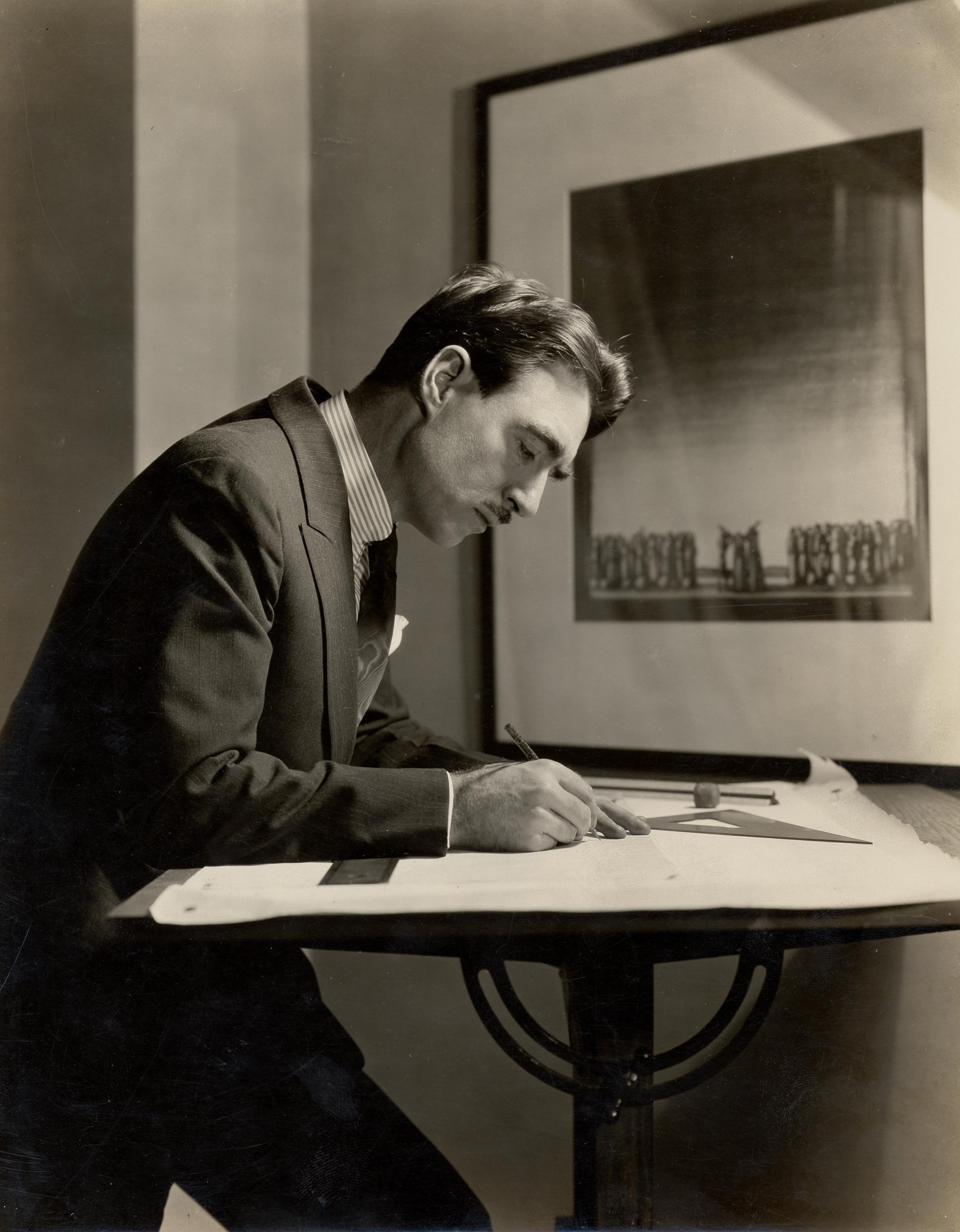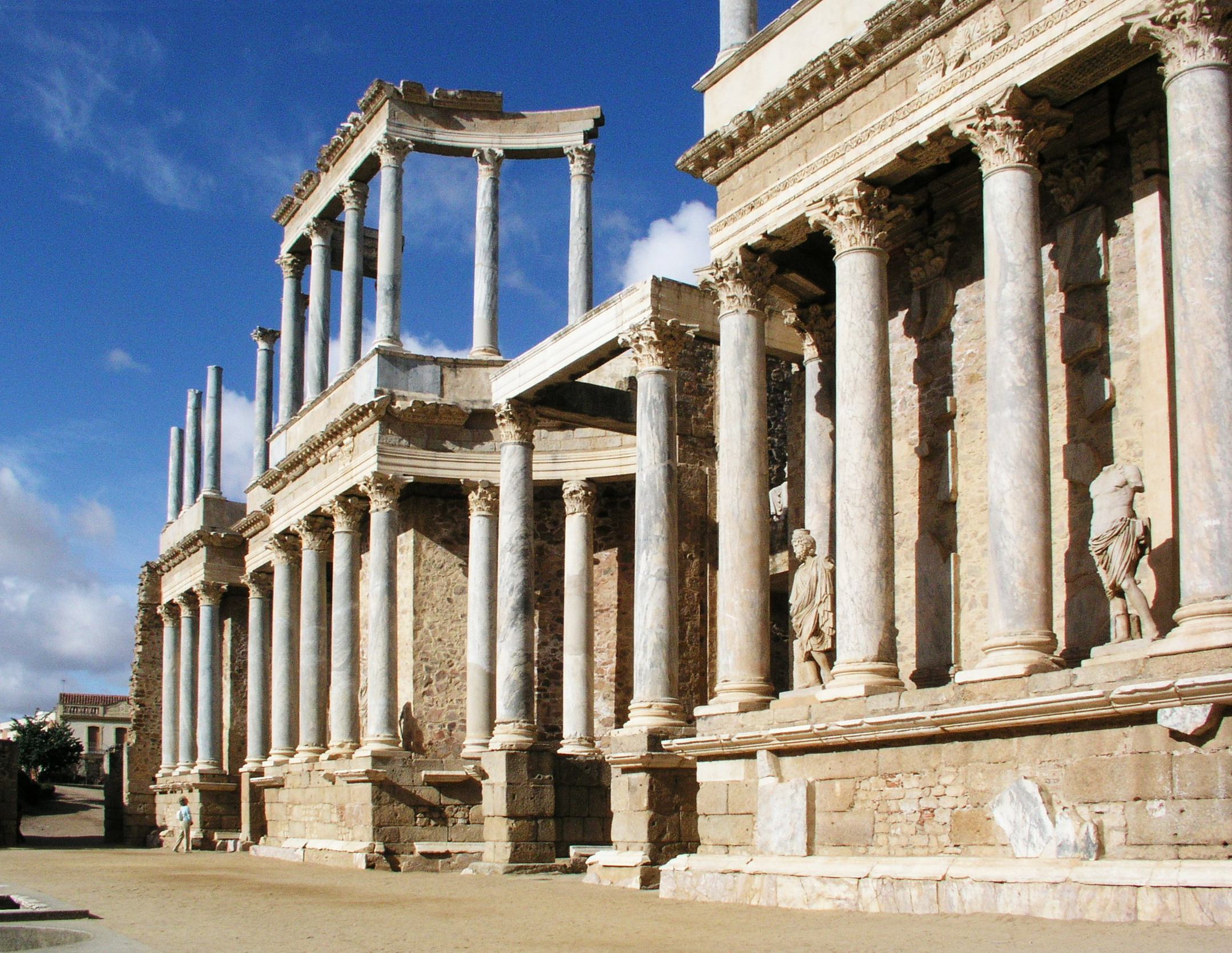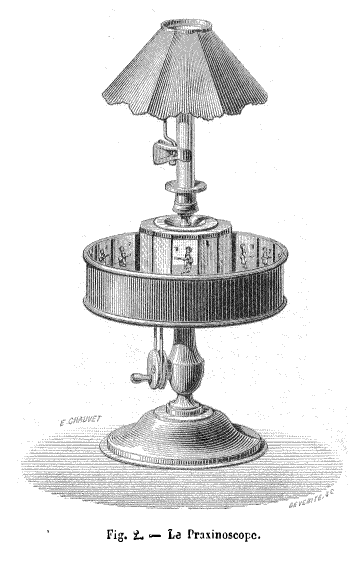|
Periaktos
A periaktos (plural form periaktoi, from a Greek word meaning ''revolving'') is a device used for displaying and rapidly changing theatre scenes. It was first mentioned in Plato's ''Republic'', in the story, "Allegory of a Cave" (c. 375 BCE), but its most intense use began in Renaissance theatre, as a result of the work of important theatrical designers, such as Nicola Sabbatini (1574–1654). It consists of a revolving solid equilateral triangular prism made of wood. On each of its three faces, a different scene is painted, so that, by quickly revolving the periaktos, another face can appear to the audience. Other solid polygons can be used, such as cubes, but triangular prisms offer the best combination of simplicity, speed and number of scenes per device. A series of periaktoi positioned one after the other along the stage's depth can produce the illusion of a longer scene, composed by its faces as seen in perspective. These periaktoi must therefore be rotated simultaneous ... [...More Info...] [...Related Items...] OR: [Wikipedia] [Google] [Baidu] |
Stagecraft
Stagecraft is a technical aspect of theatrical, film, and video production. It includes constructing and rigging scenery; hanging and focusing of lighting; design and procurement of costumes; make-up; stage management; audio engineering; and procurement of props. Stagecraft is distinct from the wider umbrella term of scenography. Considered a technical rather than an artistic field, it is primarily the practical implementation of a scenic designer's artistic vision. In its most basic form, stagecraft may be executed by a single person (often the stage manager of a smaller production) who arranges all scenery, costumes, lighting, and sound, and organizes the cast. Regional theaters and larger community theaters will generally have a technical director and a complement of designers, each of whom has a direct hand in their respective designs. Within significantly larger productions, for example a modern Broadway show, effectively bringing a show to opening night requires th ... [...More Info...] [...Related Items...] OR: [Wikipedia] [Google] [Baidu] |
Flat Chain
Flat chain is a form of chain used chiefly in agricultural machinery. Early machinery made extensive use of flat chain. It has been gradually replaced in most applications by roller chain, which is quieter, lasts longer, and requires less frequent retensioning. Modern flat chain is made from stamped steel. Individual links can be put together or taken apart using simple tools, unlike roller chain which requires a master link or special splicing equipment. Today, flat chain is used most often for conveyor belts, because it lends itself well to the attachment of slats, flights, buckets, and prongs used to move material. Such attachments can be welded on in the field, or can be purchased ready-made on a single link (or pair of links where the conveyor uses two chains) and then spliced into a loop of chain. Older forms of flat chain were made of iron. Though the sprocket A sprocket, sprocket-wheel or chainwheel is a profiled wheel with teeth that mesh with a chain, track or ... [...More Info...] [...Related Items...] OR: [Wikipedia] [Google] [Baidu] |
Scenic Design
Scenic design (also known as scenography, stage design, or set design) is the creation of theatrical, as well as film or television scenery. Scenic designers come from a variety of artistic backgrounds, but in recent years, are mostly trained professionals, holding B.F.A. or M.F.A. degrees in theatre arts. Scenic designers create sets and scenery that aim to support the overall artistic goals of the production. There has been some consideration that scenic design is also production design; however, it is generally considered to be a part of the visual production of a film or television. Scenic designer The scenic designer works with the director and other designers to establish an overall visual concept for the production and design the stage environment. They are responsible for developing a complete set of design drawings that include the following: *''basic ground plan'' showing all stationary and scenic elements; *''composite ground plan'' showing all moving scenic ... [...More Info...] [...Related Items...] OR: [Wikipedia] [Google] [Baidu] |
Skene (theatre)
In the theatre of ancient Greece, the ''skene'' was the structure at the back of a stage. The word means 'tent' or 'hut', and it is thought that the original structure for these purposes was a tent or light building of wood and was a temporary structure. It was initially a very light structure or just cloth hanging from a rope, but over the course of time the ''skene'' underwent fundamental changes. First, it became a permanent building, whose roof could sometimes be used to make speeches, and as time passed it was raised up from the level of the orchestra, creating a , or "space in front of the ". The facade of the was behind the orchestra and provided a space for supporting stage scenery. During the Roman Period, the had become a large and complex, elaborately decorated, stone building on several levels. Actors emerged from the ''parodoi'' and could use its steps and balconies to speak from. It was also where costumes were stored and to which the '' periaktoi'' (painted ... [...More Info...] [...Related Items...] OR: [Wikipedia] [Google] [Baidu] |
Set Construction
Set construction is the process undertaken by a construction manager to build full-scale scenery, as specified by a production designer or art director working in collaboration with the director of a production to create a set for a theatrical, film, or television production. The set designer produces a scale model, scale drawings, paint elevations (a scale painting supplied to the scenic painter of each element that requires painting), and research about props, textures, and so on. Scale drawings typically include a groundplan, elevation, and section of the complete set, as well as more detailed drawings of individual scenic elements which, in theatrical productions, may be static, flown, or built onto scenery wagons. Models and paint elevations are frequently hand-produced, though in recent years, many Production Designers and most commercial theatres have begun producing scale drawings with the aid of computer drafting programs such as AutoCAD or Vectorworks. Theat ... [...More Info...] [...Related Items...] OR: [Wikipedia] [Google] [Baidu] |
Scenography
Scenography (inclusive of scenic design, lighting design, sound design, costume design) is a practice of crafting stage environments or atmospheres. In the contemporary English usage, scenography is the combination of technological and material stagecrafts to represent, enact, and produce a sense of place in performance. While inclusive of the techniques of scenic design and set design, scenography is a holistic approach to the study and practice of all aspects of design in performance. Etymology and cultural interpretations The term scenography is of Greek origin (''skēnē'', meaning 'stage or scene building'; ''grapho'', meaning 'to describe') originally detailed within Aristotle's ''Poetics'' as 'skenographia'. Nevertheless, within continental Europe, the term has been closely aligned with the professional practice of scénographie and is synonymous with the English-language term 'theatre design Scenic design (also known as scenography, stage design, or set design) is ... [...More Info...] [...Related Items...] OR: [Wikipedia] [Google] [Baidu] |
Scenic Painting
Scenic may refer to: * Scenic design * Scenic painting * Scenic overlook * Scenic railroad (other) * Scenic route * Scenic, South Dakota, United States * Scenic (horse), a Thoroughbred racehorse Aviation * Airwave Scenic, an Austrian paraglider design Companies and organizations * Scenic Airlines * Scenic America, nonprofit advocacy organization * United Scenic Artists, United States labor union * Woodland Scenics, manufacturer of model railroad scenic materials Music * The Scenics, band * ''Scenic'' (album), 2004 album by band Denver Harbor Vehicles * Scenic Daylight, defunct express train in New Zealand * Renault Scénic, a compact MPV automobile produced by French automaker Renault * Tranz Scenic, passenger train in New Zealand See also * * * * * * Scenic Drive (other) * List of scenic trails * Scene (other) * Scenery (other) Scenery or theatrical scenery is anything used as a setting for a theatrical production. Scenery may ... [...More Info...] [...Related Items...] OR: [Wikipedia] [Google] [Baidu] |
Praxinoscope
The praxinoscope was an animation device, the successor to the zoetrope. It was invented in France in 1877 by Charles-Émile Reynaud. Like the zoetrope, it used a strip of pictures placed around the inner surface of a spinning cylinder. The praxinoscope improved on the zoetrope by replacing its narrow viewing slits with an inner circle of mirrors, placed so that the reflections of the pictures appeared more or less stationary in position as the wheel turned. Someone looking in the mirrors would therefore see a rapid succession of images producing the illusion of motion, with a brighter and less distorted picture than the zoetrope offered. Variations Reynaud introduced the Praxinoscope-Théâtre in 1879. This was basically the same device, but it was hidden inside a box to show only the moving figures within added theatrical scenery. When the set was assembled inside the unfolded box, the viewer looked through a rectangular slot in the front, onto a plate with a transparent m ... [...More Info...] [...Related Items...] OR: [Wikipedia] [Google] [Baidu] |
Motion Picture
A film also called a movie, motion picture, moving picture, picture, photoplay or (slang) flick is a work of visual art that simulates experiences and otherwise communicates ideas, stories, perceptions, feelings, beauty, or atmosphere through the use of moving images. These images are generally accompanied by sound and, more rarely, other sensory stimulations. The word "cinema", short for cinematography, is often used to refer to filmmaking and the film industry, and to the art form that is the result of it. Recording and transmission of film The moving images of a film are created by photographing actual scenes with a motion-picture camera, by photographing drawings or miniature models using traditional animation techniques, by means of CGI and computer animation, or by a combination of some or all of these techniques, and other visual effects. Before the introduction of digital production, series of still images were recorded on a strip of chemically sens ... [...More Info...] [...Related Items...] OR: [Wikipedia] [Google] [Baidu] |
Billboard (advertising)
A billboard (also called a hoarding in the UK and many other parts of the world) is a large outdoor advertising structure (a billing board), typically found in high-traffic areas such as alongside busy roads. Billboards present large advertisements to passing pedestrians and drivers. Typically brands use billboards to build their brands or to push for their new products. The largest ordinary-sized billboards are located primarily on major highways, expressways or principal arterials, and command high-density consumer exposure (mostly to vehicular traffic). These afford greatest visibility due not only to their size, but because they allow creative "customizing" through extensions and embellishments. Posters are the other common form of billboard advertising, located mostly along primary and secondary arterial roads. Posters are a smaller format and are viewed principally by residents and commuter traffic, with some pedestrian exposure. Advertising style Billboard advertiseme ... [...More Info...] [...Related Items...] OR: [Wikipedia] [Google] [Baidu] |
.jpg)






.jpg)